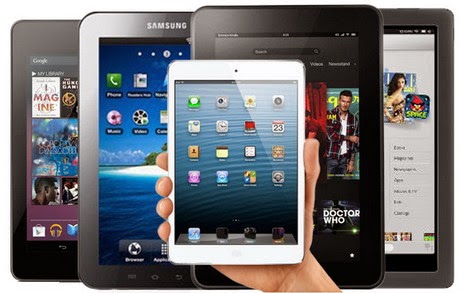
We all know that tablets are taking up a bigger and bigger chunk of the computing market. But two reports out today from IDC show just how quickly and dramatically the tablet market itself is changing.
Traditional PC shipments peaked in 2011, when 363 million shipped. This year could mark an important turning point, as tablets outsell portable (laptop) PCs for the first time. By 2015, IDC thinks that tablet shipments will surpass PCs completely. (The company counts any slate-form device as a tablet, whether or not it has a detachable keyboard, but counts convertibles as PCs.)
IDC expects an awful year for traditional PCs, predicting a drop of 7.8 percent this year; it had been expecting a decline of 1.3 percent. We’ll see if even the revised number holds true – IDC had initially expected a 7.7 percent decline in the first quarter but it turned out that shipments were down a whopping 14 percent compared to the same quarter last year.
By comparison, IDC expects tablet shipments to grow 58.7 percent in 2013, reaching 229 million units.
Even as the tablet market is so quickly surpassing PCs, the tablet market itself is far from settled. IDC is expecting some pretty dramatic changes in shipments based on device size. Where the 8 inch to 11 inch category had 73 percent of shipments in 2011, IDC expects it to drop to just 37 percent in 2017. Tablets smaller than 8 inches will pick up the slack, IDC thinks. Those tablets had 27 percent of the market in 2011 and will jump to 57 percent in 2017. Larger tablets – surely for niche applications – are expected to get a bit of a boost, from 2 percent of shipments this year to 6 percent in 2017.
What size exactly will dominate the sub-8 inch category is anyone’s guess. Vendors are still toying with options. It could be that a range of sizes will continue to be available, with price and operating system playing into the popularity of various sizes.
Price is definitely driving some of the shift to tablets and away from laptops. This year, IDC expects the average selling price of tablets to drop a pretty dramatic 10.8 percent, to $381. For individuals or businesses looking to invest in a portable machine to supplement a desktop, that’s a very tough price to beat. That’s particularly true given that while the price of Windows 8 laptops has dropped since launch, most are around twice as expensive. IDC said that the average selling price of a PC in 2013 is $635 – although the more popular convertibles cost a couple hundred more than that.
The most recent tablet boom is being led by cheap Android devices, IDC said. That’s tough news for both Microsoft and Apple, which both have pricier tablets.
With more workers bringing their own tablets and PCs to work, price will become an even more important factor. IDC said that 25 percent of organizations with more than 10 people say they bought the PC they use for work. People tend to be more price conscious when choosing their own device, giving Android a continued boost.
That could be particularly bad news for Microsoft. IDC said that some of the corporate PC purchases – which tend to go Microsoft – that it expected this year aren’t actually going to happen. Given the choice, surely many users will go Chrome, Android, or Apple.














